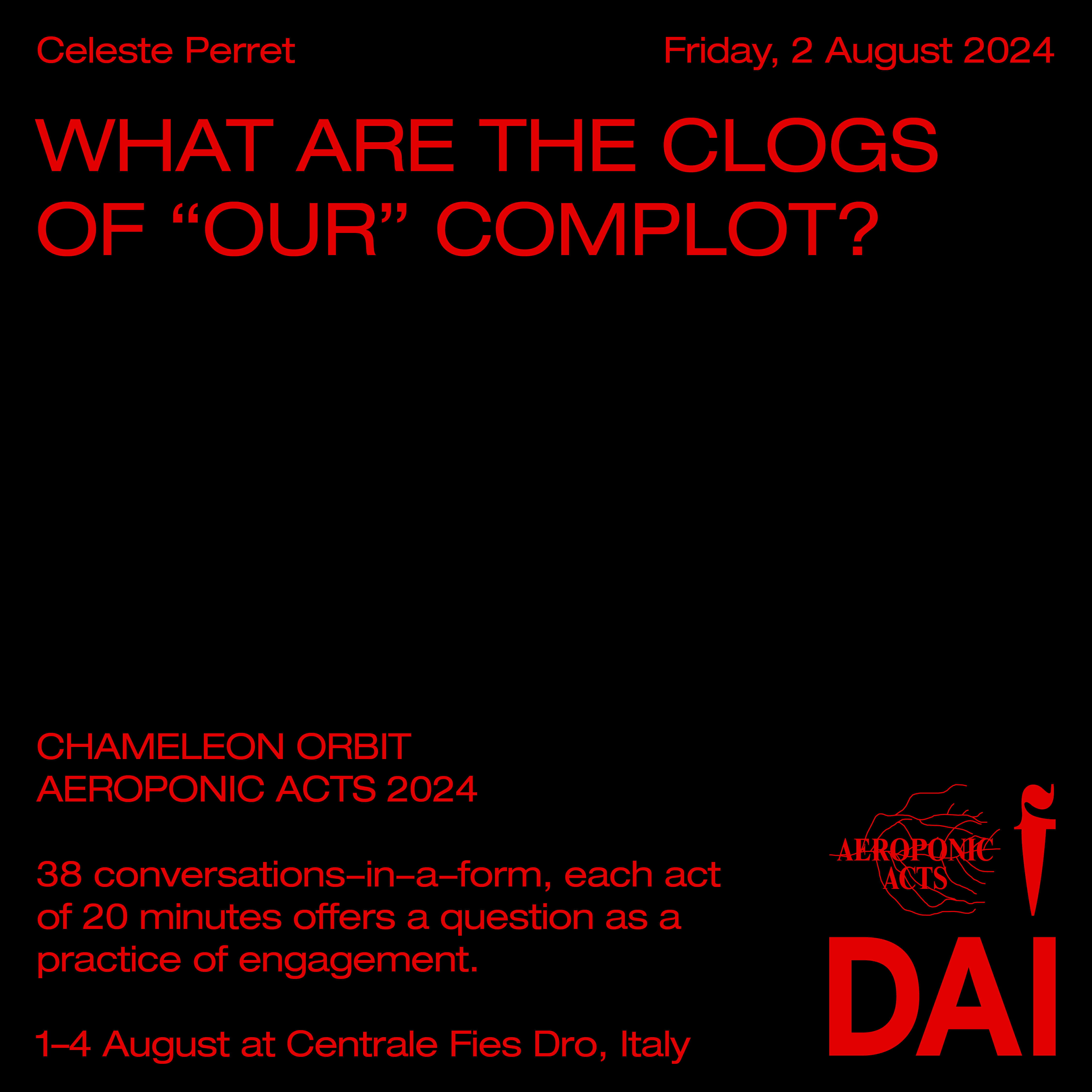Celeste Perret ~ toilet is the techno project
In this menacing era, all that gets silenced, expressed, out of breath. Lisssssten, but listen: it is important to speak. With or without, computers scripts are always operating even into bellies, to regulate flows of feelings. I am bloated of gassy conspiracies, of waining the political into bureaucratic policies. That said, here is a coordinate on the edge of a land line. I blink three times scrolling through letters of condolences. These twenty minutes are yet to be written. How may I contribute if I don’t have yet a ground to start from?
BACK TO: Chameleon Orbit

